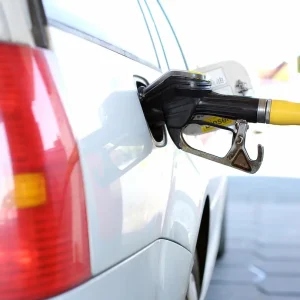A new AI-based vehicle inspection system has been launched, designed so drivers can capture images for professional condition reports using a smartphone.
MJB Automotive Solutions is offering PAVE, an inspection system developed in Canada.
The system, accessed by drivers on their smartphone web browsers, with no app download needed, starts by guiding them through a series of 13 photos that need to be taken of their vehicle. It provides example outlines on the driver’s phone screen, so they can line their shots up knowing that they are capturing the images required.
Then, once the driver has answered some further questions about the vehicle – for example how many keys it has – which can be tailored to individual customers’ requirements, the AI technology processes the images and produces a condition report with an overall grade.
MJB founder Marcus Blakemore told Business Car that the system would capture a minimum of 80% damage on a vehicle, which he argued would outperform a human inspector.
He said one of the keys to the system’s appeal was its ease of use.
“It’s something that can be used by a non-technical person,” he said. “A lot of systems are actually hardware, where you need to drive through a scanner, or it is just not physically possible to use the system for the requirements of our customers.”
Blakemore said that out of more than 50 vehicle inspection systems he had looked at, PAVE was the only one he was comfortable with, due to an added element of human safeguarding in the process, in addition to machine learning by the AI.
He said: “Once the inspection has been finished, we have a team of desk-based engineers, that work 24 hours a day, seven days a week, who scan the inspection and sanity check what they have seen.
“This is the only system that actually has that – everybody else is relying on machine learning [alone].”
MJB says that the system is suitable for leasing companies, rental companies, OEMs, and also fleet managers directly, with Blakemore saying it could be particularly useful for those running fleets during the current pandemic with altered working arrangements.
He said: “In these Covid times people aren’t going to offices anymore, so if you want to get a view of your fleet, it’s about getting a light inspection that gives you a very comprehensive overview of the condition of that vehicle at that moment in time.”
“[Managers could use it] not just for their own fleet but for the grey fleet as well, because we are seeing more and more corporate responsibility regarding the grey fleet.”
Blakemore said that from discussions with leasing companies, the system seemed well suited to pre-inspection purposes.
He said: “Leasing companies are saying they would much rather have a view of the vehicle 30 days out from return, to make a commercial decision about what their route to market to dispose of it is.
“This is not the final inspection that you would get when you return a vehicle. This is very much about giving everybody visibility of the condition of the vehicle, and advising a customer what they can potentially expect as a bill, or giving them the opportunity to get the vehicle repaired.”
During the current pandemic, there are obvious advantages from a system that can reduce physical interaction, and according to Blakemore that’s just one of the benefits of PAVE.
“A lot of this is about cost. To send a physical inspector out to inspect somebody’s car, if you’ve got some volume, is a minimum of £45. This is not even a third of that, and you’ve got the results coming back to you within ten or 15 minutes.
“A lot of inspections where the inspector goes out, if he hasn’t got signal, you can be half a day or more before you get the report back. This is trying to build efficiency and consistency into the process for people, and reduce costs.”





